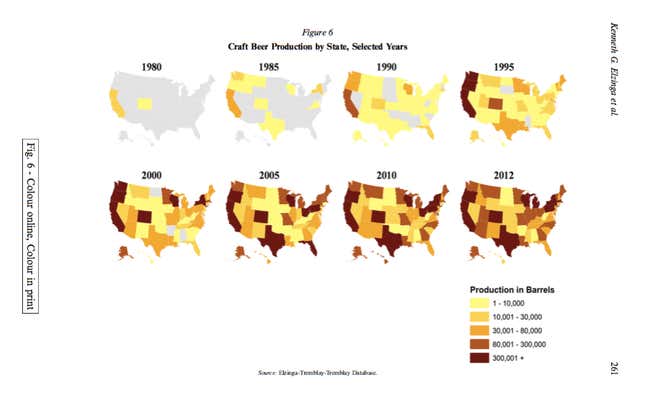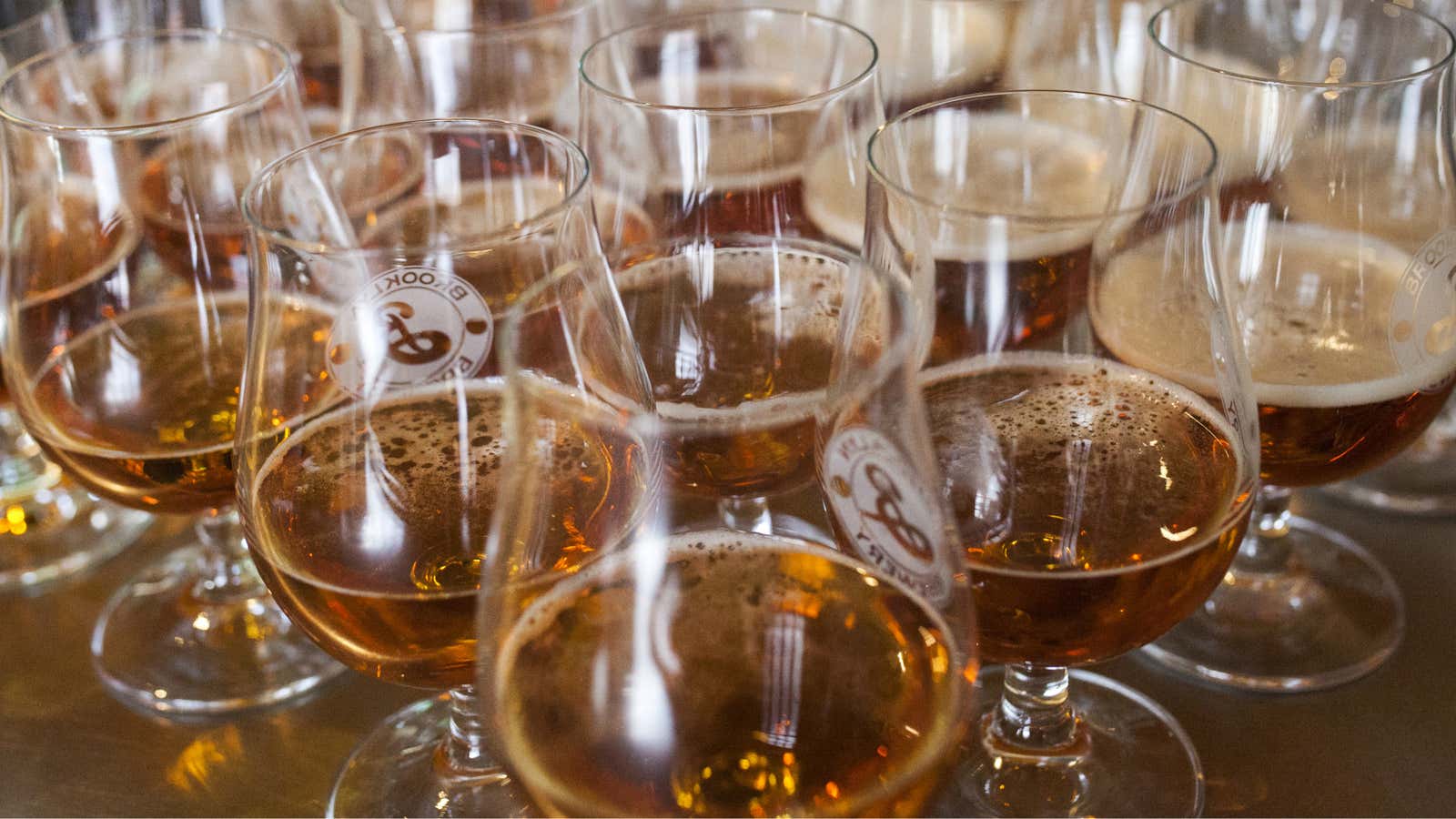By now, the US craft beer boom is old news. But how exactly craft beer production has spread across the country is a different story—and the subject of a newly released paper in the Journal of Wine Economics.
Back in the 1980s, the vast majority of craft breweries were located in the Pacific Northwest—California, Washington, and Oregon. Over the next decade, production moved to the Northeast, and then slowly came back to fill out states in the Midwest. It took until 2001 for every state to be making craft beer, with southern states generally taking longest to enter the market. Here’s some maps from the paper:

What accounts for this geographic pattern? The economists behind the paper argue it comes down to four main factors. The first three are demographic: Craft breweries tend to set up in states with higher incomes, a denser population, and a greater number of young adults.
This all makes sense. As the economists explain, craft beer is relatively pricey, so you’d expect producers to seek out areas where the people earn more. Demand will generally be higher in places with more people, and consumers of craft beer skew toward young adults. (Research from the Brewers Association, a craft beer trade group, has reached similar demographic conclusions.)
The fourth factor, on the other hand, is regulatory. “State governments can influence craft brewer production and location by affecting the cost of doing business through excise taxes and state regulations,” the economists write. Not surprisingly, states with legalized brewpubs are also more likely to have craft brewers. Data on the years in which brewpubs became legal by state—starting with Washington in 1982 and finishing with Mississippi and Montana in 1999—roughly tracks the spread of craft breweries across the US.
The economists even attribute the initial resurgence of craft beer to a regulatory change. In 1978, Congress cut the federal excise tax on small brewers to $7 a barrel from $9. “This was a windfall for craft brewers,” the paper states. Just look at how their numbers have grown ever since.




